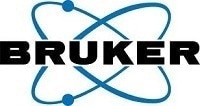An Italian research group has designed an innovative approach for removing heavy metals from contaminated soils.1 They found that by combining hemp plants with spirulina, a type of dried blue-green algae, hemp saw an increased ability to remove and retain heavy metals such as cadmium and zinc. The system was not as effective for lead, however.
There is increasing concern over the risks of contaminated soils, particularly from heavy metals which are unable to break down in the environment and can accumulate over time. They present threats to plants, ecosystems, and water supplies, and some, such as cadmium and lead, are also known to impact the human nervous and endocrine systems.

Image credit: Shutterstock / pilipphoto
Recent attention has been focused on using plants and microorganisms to remove contaminants from soil. Hemp (Cannabis sativa) is particularly good at this because it has long roots, high biomass, and a short life cycle (180 days). Research has shown that hemp takes up and absorbs heavy metals such as cadmium, zinc, lead, nickel, copper, and chromium.2 The plants are also used in many industrial applications, such as textiles and biofuels. Meanwhile, cyanobacteria or blue-green algae (Arthrospira platensis) has been shown to bond well to metal ions.3,4 In its dried form, known as spirulina, the algae is used in agriculture to enhance plant growth, yield, and seed germination.
As part of the Italian study, Vito Gallo’s team from the Polytechnic University of Bari investigated whether spirulina would boost the effectiveness of hemp plants as a remediation tool.1 To this end, they added cadmium, nickel, chromium, lead, copper, and zinc to the hemp’s soil to create artificially contaminated samples. They gave one group of plants water containing spirulina and one group only water; a control group was grown on uncontaminated soil.
The researchers then used Nuclear Magnetic Resonance (NMR) spectrometry to look for heavy metals in the leaves and stems of the plants after harvesting and in soil samples. They used a Bruker Avance Nuclear Magnetic Resonance (NMR) spectrometer (400 MHz) to do this and Bruker BioSpin’s TOPSPIN 2.1 software to analyze the one-dimensional 1H NOESY NMR spectra. Additional data was gathered from Inductively Coupled Plasma-Atomic Emission Spectrometry (ICP-AES).
The team reported that copper, chromium, nickel, and zinc were more likely to be found in the leaves of the hemp plants, but lead tended to accumulate in the stems. Significantly, the NMR data revealed different results in those plants irrigated with spirulina. The algae appeared to enhance growth which produced plants with higher biomass (leaves and stems). Apart from lead, it also boosted the plants’ metal sequestration capabilities. The researchers believe the different results with lead could be because lead bonds more strongly with spirulina and stays put in the soil.
The findings suggest that using plants and algae in a combined remediation system effectively removes heavy metals from soils. It appears that spirulina boosts the capacity and effectiveness of hemp to act as a remediation tool, and plants were healthy enough to be re-used for other purposes afterward. The researchers suggest that the results also pave the way for spectroscopic methods to rapidly spot structural changes in other environmental situations, allowing remediation efforts to be designed and implemented quickly.
References and Further Reading
- Musio B. et al. A spectroscopic study to assess heavy metals absorption by a combined hemp/spirulina system from contaminated soil. Environmental Advances Volume 7, April 2022, 100144
- Zielonka D. et al. Hemp-Based Phytoaccumulation of Heavy Metals from Municipal Sewage Sludge and Phosphogypsum Under Field Conditions. Agronomy 2020, 10(6), 907
- Bhattacharya S. The Role of Spirulina (Arthrospira) in the Mitigation of Heavy-Metal Toxicity: An Appraisal. Journal of Environmental Pathology, Toxicology and Oncology Volume 39, Issue 2, 2020, pp. 149-157
- Cepoi L et al. Growth and heavy metals accumulation by Spirulina platensis biomass from multicomponent copper containing synthetic effluents during repeated cultivation cycles. Ecological Engineering Volume 142, January 2020, 105637

This information has been sourced, reviewed and adapted from materials provided by Bruker BioSpin Group.
For more information on this source, please visit Bruker BioSpin Group.